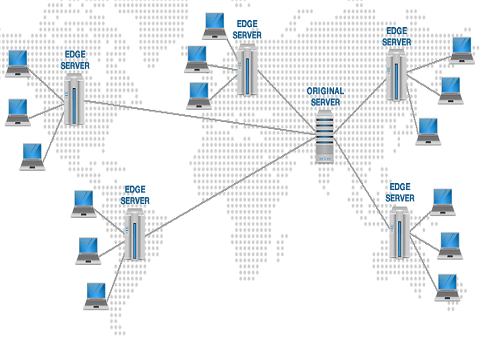How Content Delivery Networks Work?

The internet’s reach is growing and more and more people are seeing the value in staying connected online. As such, businesses have also taken advantage of this by further expanding their ventures digitally. Experts are saying that it’s never been easier to start a brand than today. And by the rate of how everything’s turning out, we can’t agree more. This article is going to explore how Content Delivery Networks work, what they are, and why they’re beneficial to a plethora of websites.
Why you need to know How CDN Works
To begin, CDNs are networks of servers strategically distributed in many parts of the globe. Each server acts as a content delivery tool and they primarily function to reduce latency—the period it takes for a web page to load in entirety. In other words, CDNs improve one’s browsing experience because they speed things up.
For example, let’s assume your site is hosted by a data center in Washington. When you don’t have a CDN, each of your visitors will have to download all of your website files from Washington. This isn’t a problem if your site visitors are from Vancouver, Pennsylvania, or Maryland. But what if they’re from Australia? Data does travel quickly, but that’s still 9,756 miles!
Simply put, no matter how updated and inventive your hardware is, distance is bound to delay your website’s loading speed for your users who are in distant parts of the world. This is exactly why websites that get good traffic need the technology. CDNs are one solution to retain customers. When you run a business, content delivery is an activity you can’t overlook. Otherwise, you’re only going to lose money.
How Content Delivery Networks work Is Simple
As established earlier, how CDNs work largely revolves around content delivery—it is, after all, implied in the name. But what exactly is the science of how CDNs work and how is content delivery improved in the process?
CDNs are composed of a variety of hardware variables—Points of Presence (PoP), Storage, and Caching Servers. To start, PoPt in these multiple servers. Lastly, storage (HDD/SSD and RAM) requires no introduction. These are the tangible devices where your online content rests.
Methods of Content Delivery
Furthermore, how content delivery networks work is a little much more complicated than just sending out files. Clients can choose whether or not they want to Push or Pull their content delivery.
How CDNs work with Pull CDN
In this context, servers don’t store your web content in advance. They only keep them once a request is made. For instance, you run a digital publication with five new stories every day. Once a visitor from a different region accesses your site, their edge server is obtaining your new web content for the first time, as well. Only then will they keep content. In other words, your original updates are stored only in your web host origin and not in the several servers within your Points of Presence; hence the term “pull.” With that in mind, the first time they request for particular content might not be as snappy as the second time.
How CDNs work with Push CDN
On the other hand, push CDN distributes data in advance, so content delivery is much busier. Whether or not someone requests for the content, the multiple CDNs already have the data. Although this is regarded to be better for a lot of websites, this also takes up more storage space.
Overall, knowing how content delivery networks work is important as one certainly wouldn’t feel compelled to make use of CDN services if they don’t have a firm grasp of how CDNs work. At the end of the day, premium content delivery is important to retain customers and attract new ones. To add, CDNs aren’t just about the transferring of data. They’re about increased website protection, being able to segmentize your market, and being more available and present in regions your brand can’t physically penetrate.
Power-up your Content Delivery
30 Day Free Trial Cancel Anytime